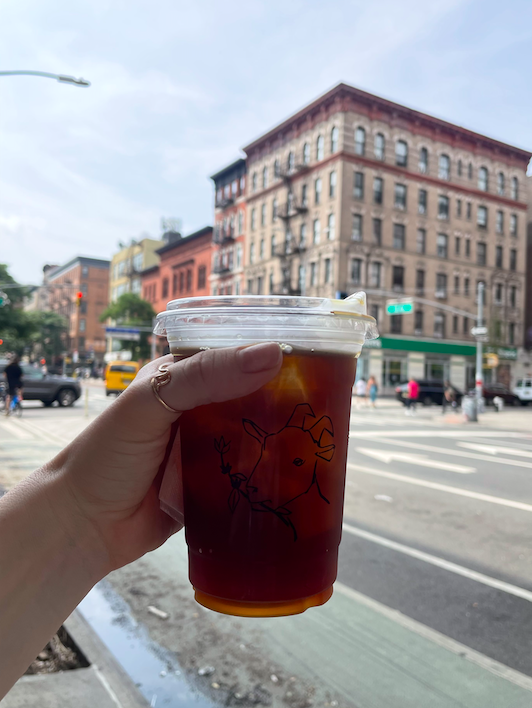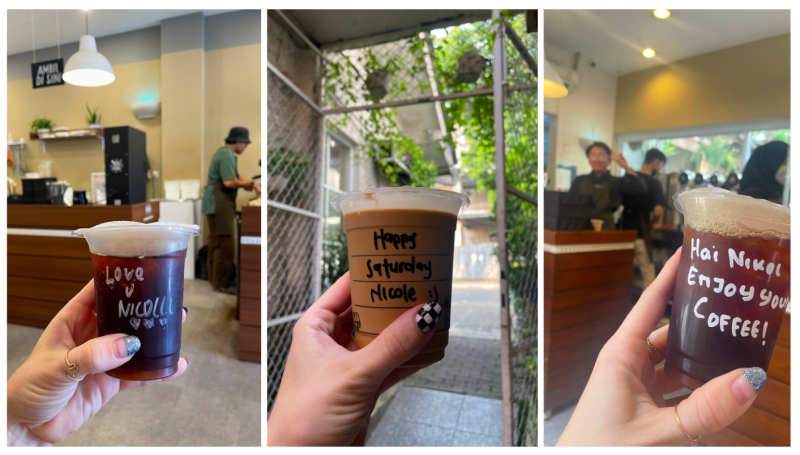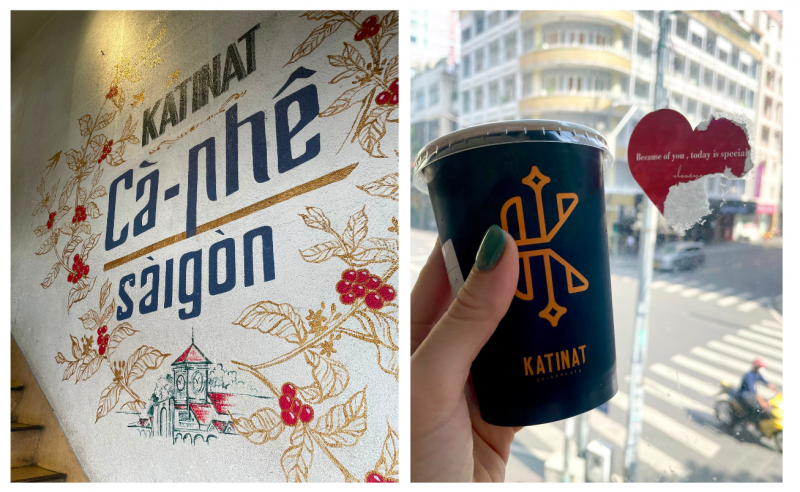Words by Nicole Siegenthaler
Originally Published in Issue 46
Where I’m from, America, we have a well known saying: the customer is always right. Indeed, the customer is king! It’s absolutely a breeze for those with food allergies and diet restrictions to dine out at any restaurant (vegan at a steakhouse? No problem!) and if you don’t get exactly what you ordered, in the US, that’s grounds for a refund (and maybe a free meal next time you return).
Sure, there are many benefits to this mindset of hospitality. But there’s also a flip side: on my most recent trip to New York City this September, I witnessed a perfectly reasonable, sane-looking gentleman in front of me request to add cream to his $12 (R225) pour over of a beautiful pink bourbon natural processed Guatemalan at La Cabra. The barista tactfully asked him to try it first as “our pour over coffees have a much different taste profile than you may be used to” – he gamely did and though he was surprised at the flavour, he still wanted cream. The barista relented and a little piece of my heart broke at the sight.
Of course it is not a crime to add milk (or cream, as Americans refer to it) to your coffee. Adding fat to your coffee is quite delicious, in fact. However I’m here to argue for a concept I’ve picked up via my Korean friends: 눈치 (nunchi).
What is nunchi?
Nunchi, in short, is emotional intelligence. It’s reading the room and acting accordingly. Dating back to the seventeenth century, the literal translation of the characters “눈 nun” and “치 chi” are “eye power”. Those with nunchi are able to perceive the mood and emotions of the people they are with and adjust their own interactions to maintain balance in the relationship. They often are perceptive, quick witted and have good common sense. Those without are socially clumsy and awkward. It’s that person lounging on the left side of the escalator even though everyone is standing on the right – and now, no one can walk past.

In praise of cafe nunchi
Perhaps you already see where we’re going: back at La Cabra in September, the patron in front of me had no cafe nunchi. Founded in Copenhagen and known for their roasting and sourcing, beautiful cafes and elaborate baking program, La Cabra products are best enjoyed as served. No alterations necessary.
In my travels, one of my great joys has been cafe hopping. However, something I’ve realized over many a pour over, ice black and croissant: not every cafe is going to be what you want. The quicker you “read the room” (nunchi!), the better cafe patron you are, the better your experience will be.

Cafe Nunchi 101
Before we proceed to advanced nunchi levels let’s begin with the basics. In small and locally owned cafes, I’m a firm believer in minimum one order per hour for however long you’re sitting down. This is a minimum by the way: if you’re using their wifi and occupying their table real estate you’ve got to pay up. They’re serving you delicious food and beverage, enabling you to leave your office or equally uninspiring work from home set up to park it at their cozy spot? Priceless. One order per hour my friend, no excuses.
Furthermore, when working from a cafe: please use your nunchi and choose the appropriate cafes. If there aren’t many outlets, if the tables are small, perhaps this cafe is not intended for your excel spreadsheets.
I also like to scan the cafe's equipment before placing my order: what espresso machine are they using? Which grinder is behind the bar? If the espresso machine looks like it’s been around since Y2K I’m probably not ordering their single origin. Even though I typically drink black coffee, this is the moment for a cappuccino: the milk will help cover a less than stellar espresso shot and overall I’m just going to have a better experience.
Nunchi and me: Morning coffee in Jakarta
The last year and a half I’ve lived between Jakarta and Joburg. When in Jakarta (the largest city of Indonesia, a prolific coffee producing nation) I take a quick walk to Tuku every morning, a local chain known for fast service, cheap coffee and small snacks. Is it known for specialty coffee? Not really. Therefore, my first week or two I stuck with an iced black.
This is where I need to take a quick detour to remind you: when traveling, learn a few words of the local language. Being based in Jakarta, I needed to learn Bahasa Indonesia (or simply: Bahasa) in order to communicate. Of course you won’t be fluent (I honestly still speak like a toddler after two years of studying) but you will be able to connect with people you meet. Therefore, at Tuku, though I’ve seen baristas speak English occasionally when another foreigner comes in, I’ve stuck to Bahasa. This is nunchi! And it pays off.
After two weeks of shyly ordering my daily, bitter, ice black, one day the barista asked me if I wanted to try something. Honestly, he most likely told me what he was offering but at that point my basic Bahasa comprehension picked up “want to try” and I just said yes (mostly because I didn’t have the words to ask any more questions). He poured a small cup from a Hario server of what turned out to be a wonderfully sweet single origin pour over from Bali. I excitedly asked what this was and he pointed to a line item on the menu “Kopi Beragam” – although of course I knew “kopi” was coffee, “beragam” was a Bahasa word I didn’t know and therefore had overlooked on the menu. It turned out it was their single origin, pour overs. I later found out that while Tuku uses one set of beans for their espresso drinks they roast and sell another line (Beragam) for single origin. At Rp15,000 (R18) an iced beragam has become my go-to order at Tuku.
When I visit a recommended cafe, or am at one of my regular spots, I always trust my baristas. They’re there every day making the same menu over and over: they know what’s good. My mornings at Tuku are a highlight of my day, oftentimes the baristas have begun my order before I even make it to the front of the queue, will share an iced tea or new menu item with me on the house and write notes for me on my coffee. It’s the little things, after all.
Advanced nunchi: Veering off the path, trusting your surroundings
Okay okay, I realise many of you may be thinking “duh of course I trust the baristas”. Many of you are probably well traveled coffee professionals yourselves so asking the barista for recommendations is a no-brainer.
And I agree: walking into a widely recommended specialty coffee shop and asking the barista what they’re drinking now is basic nunchi (but you should still follow it: trust the baristas!) But what about when we don’t have a friend’s recommendation, or don’t speak the language, or are just somewhere we don’t know? Reader this is when tapping into your nunchi is most important.
In November 2022 I had the chance to spend five days in Ho Chi Minh City, Vietnam. As a lover of pho (the popular Vietnamese noodle broth dish) and banh mi (a meat, pâté, pickled veg sandwich on a baguette) I was highly anticipating my first trip to Vietnam. I was ready to channel my inner Anthony Bourdain and try as much street food as possible. I was ready to point at what the table next to me was having when I inevitably couldn't’ read the menu. Equally, I was curious to try Vietnamese specialty beans as Vietnam is the second largest coffee producer in the world.
However once I was on the ground, it was a different story. My few words of Vietnamese did nothing as my clumsy American mouth could not get a hold of the tonal pronunciations and many of the specialty shops that had been hyped up online turned out to be expat cafes with mid level coffee.
Every day when I set out I’d walk past what looked like a bustling, shiny new chain restaurant. Low camping chairs were lined up next to each other on the sidewalk, all facing out towards the street for patrons to sit side by side and judge pedestrians passing by. Every day I took note of the young locals meeting up with friends or perhaps on a date, but didn’t go in. I didn’t come all this way to Vietnam to eat at a chain! There was fresh banh mi being served in a tiny alleyway by a Vietnamese aunty! I had Vietnamese single origin varietals I’d never heard of that I needed to try!

My pride and stubbornness were worn down by the fourth day when I’d tried all the cafes on my list and eaten banh mi for breakfast and lunch the previous day. I tapped into my nunchi and reasoned, surely if all these locals are always hanging out here, it must be good? Timidly I entered the restaurant lobby and ordered an iced Vietnamese coffee with condensed milk, a standard local beverage. I glumly made my way upstairs to sit by a window, accepting my defeat: I’d submitted to the chain.
Reader, remember when I said it’s not a crime to add milk to your coffee? Well, it was anything but a crime to try out this spot because it was far and beyond the best coffee I had in Ho Chi Minh City. The rich, sweet condensed milk rounded out the bitterness of the robusta beans (were they from Vietnam? A blend? Who knows! I didn’t care anymore!) and in the heat of the morning I finished my coffee in five minutes flat.
I had to leave early the next morning to catch my flight but as I waited for my taxi I took one last look at Katinat, the chain cafe on my corner. That’s the power of nunchi: when you let your good common sense win over your pride something delicious, new friendships or perhaps just the perfect morning coffee you never knew you needed, is often waiting on the other side for you.